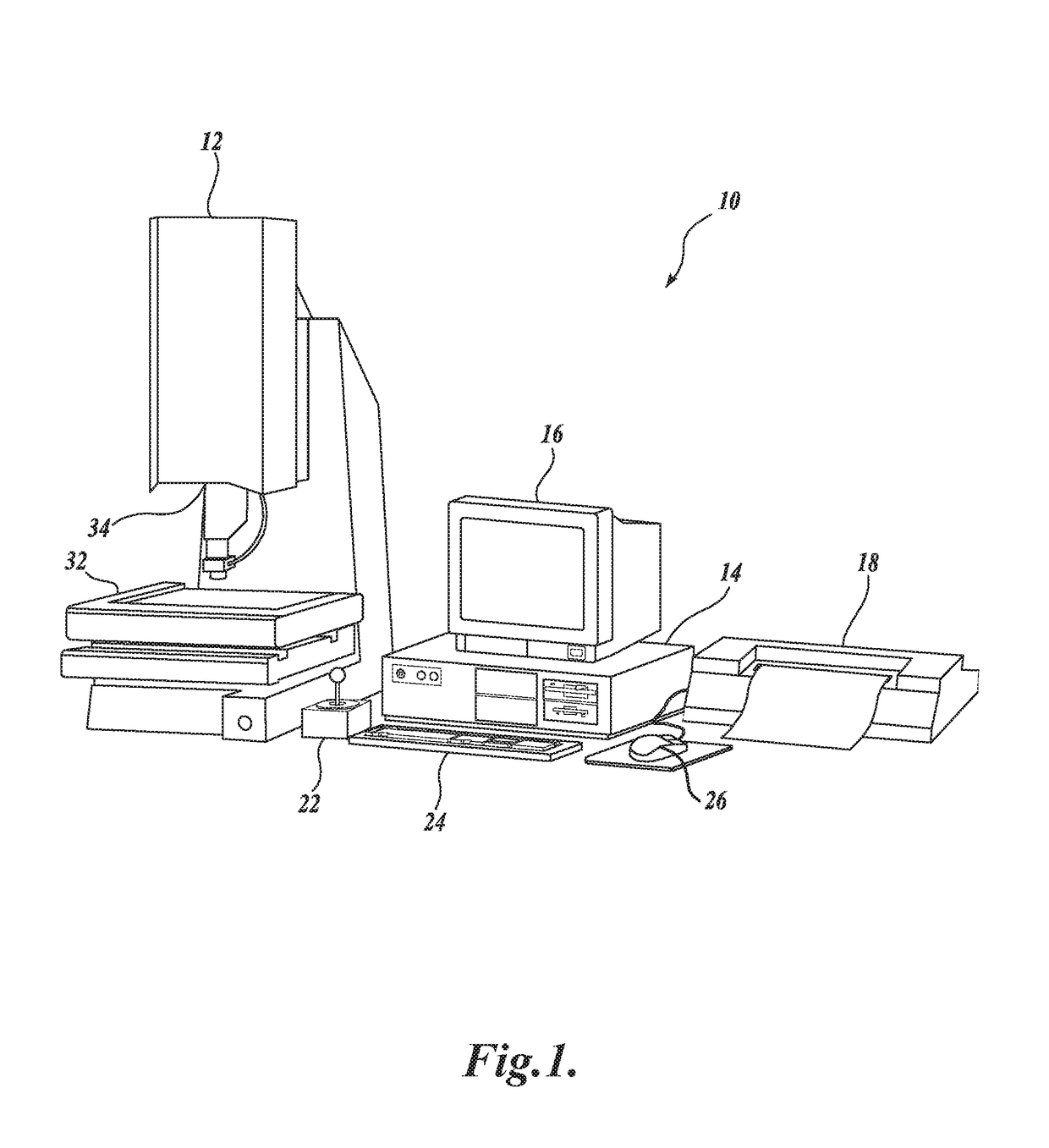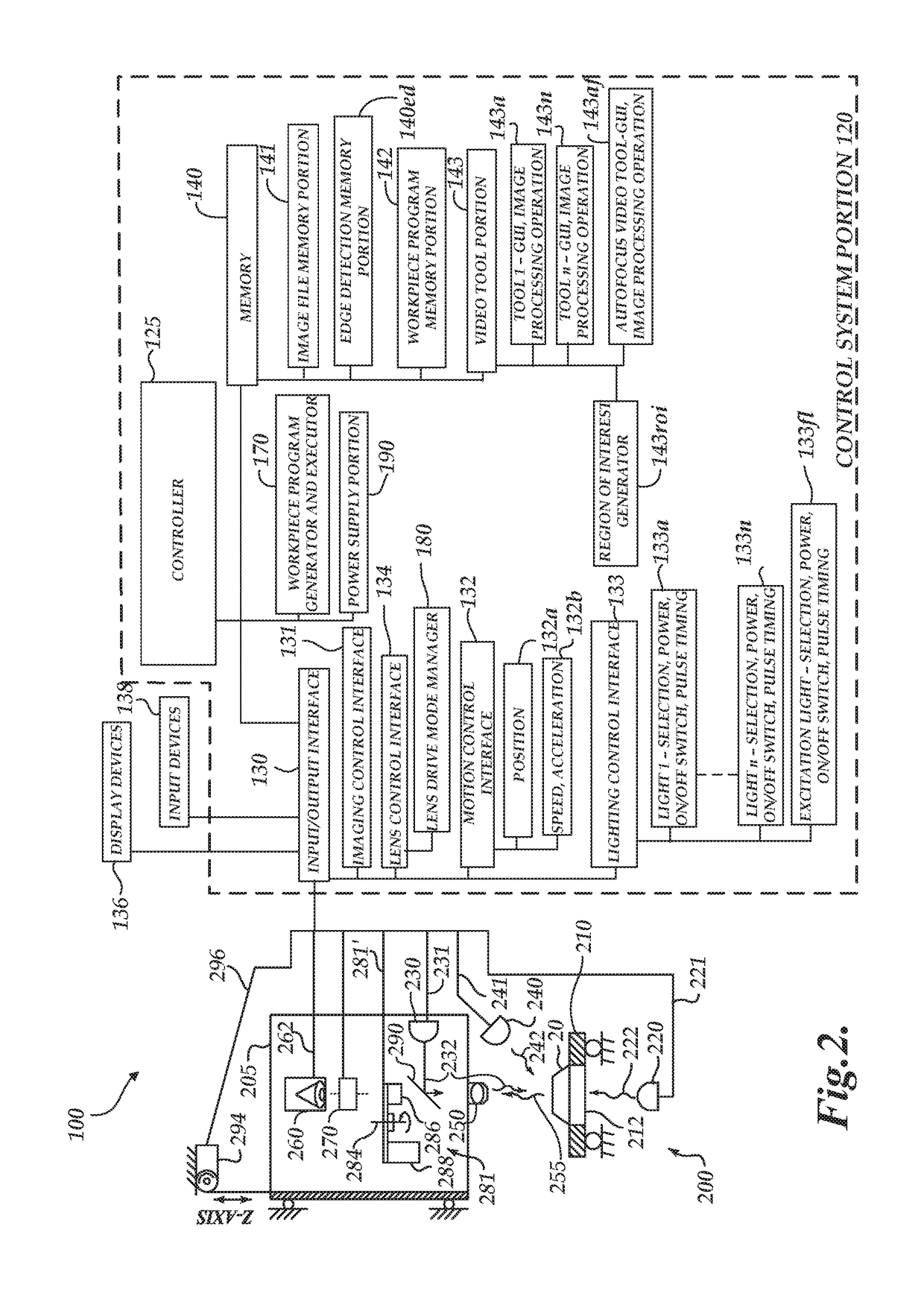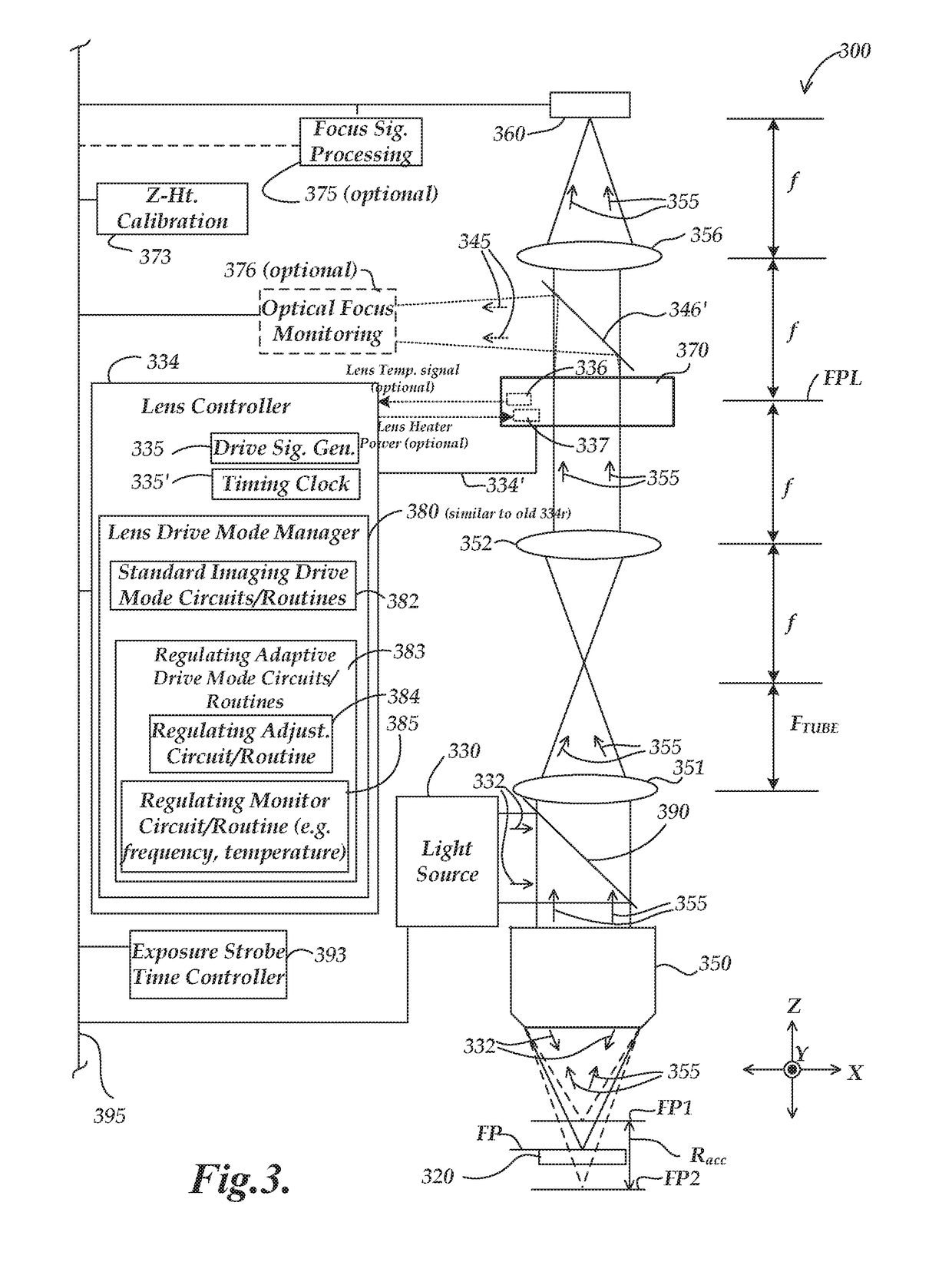Stabilizing operation of a high speed variable focal length tunable acoustic gradient lens in an imaging system
a high-speed variable and imaging system technology, applied in the field of precision metrology, can solve the problems of small, but non-negligible, measurement errors, and the operation conditions of the tag lens may drift, so as to facilitate the stabilization operation of the tag lens, reduce or eliminate the above-mentioned measurement errors, and stabilize the operation
- Summary
- Abstract
- Description
- Claims
- Application Information
AI Technical Summary
Benefits of technology
Problems solved by technology
Method used
Image
Examples
Embodiment Construction
[0018]FIG. 1 is a block diagram of one exemplary machine vision inspection system 10 usable as an imaging system in accordance with methods described herein. The machine vision inspection system 10 includes a vision measuring machine 12 that is operably connected to exchange data and control signals with a controlling computer system 14. The controlling computer system 14 is further operably connected to exchange data and control signals with a monitor or display 16, a printer 18, a joystick 22, a keyboard 24, and a mouse 26. The monitor or display 16 may display a user interface suitable for controlling and / or programming the operations of the machine vision inspection system 10. It will be appreciated that in various implementations, a touchscreen tablet or the like may be substituted for and / or redundantly provide the functions of any or all of the computer system 14, the display 16, the joystick 22, the keyboard 24, and the mouse 26.
[0019]Those skilled in the art will appreciate...
PUM
| Property | Measurement | Unit |
|---|---|---|
| resonant frequency | aaaaa | aaaaa |
| resonant frequency | aaaaa | aaaaa |
| resonant frequency | aaaaa | aaaaa |
Abstract
Description
Claims
Application Information
 Login to View More
Login to View More - R&D
- Intellectual Property
- Life Sciences
- Materials
- Tech Scout
- Unparalleled Data Quality
- Higher Quality Content
- 60% Fewer Hallucinations
Browse by: Latest US Patents, China's latest patents, Technical Efficacy Thesaurus, Application Domain, Technology Topic, Popular Technical Reports.
© 2025 PatSnap. All rights reserved.Legal|Privacy policy|Modern Slavery Act Transparency Statement|Sitemap|About US| Contact US: help@patsnap.com



